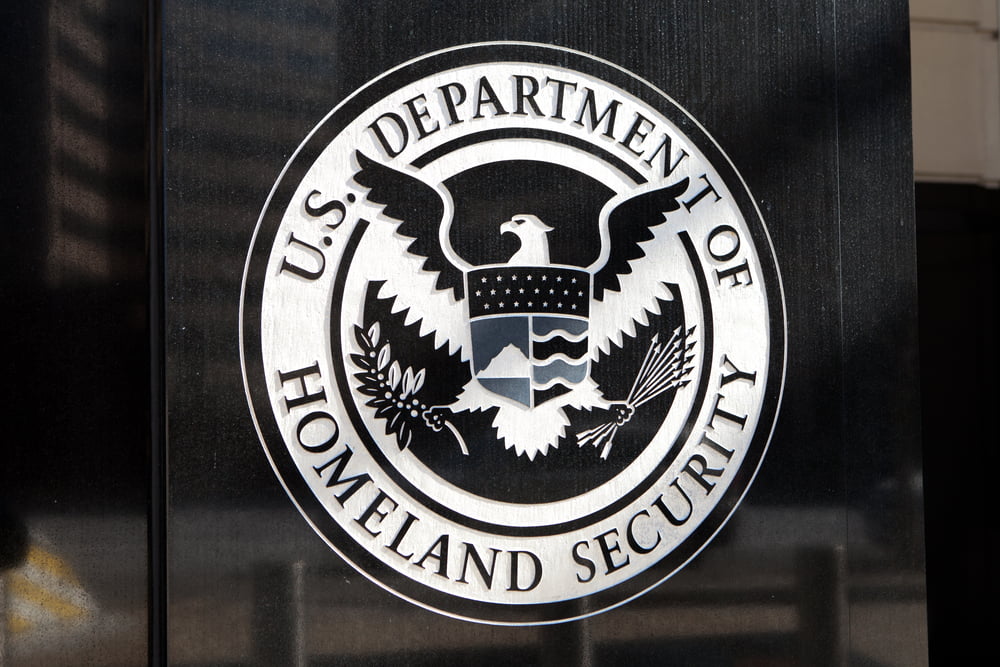With the private sector taking the lead in research, development and adoption of the blockchain, the government must consider leadership opportunities within the community and partner with stakeholders to bring solutions to market. This is according to Douglas Maughan, a division head at the US Department of Homeland Security who testified before the House Science and Technology Committee yesterday. He further warned against the ongoing arms race between the various blockchain solutions providers, citing it as one of the reasons the technology hasn’t been taken up by the government and other industries.
Blockchain Offers Much Promise
Maughan, who is the Division Director of the Science and Technology Directorate at Homeland, praised blockchain, hailing it as a technology that holds much promise. This is especially true for the government, as it could overhaul how the government operates entirely.
From a government perspective, the technology holds the potential for enhanced transparency and auditing of public service operations, greater supply chain visibility to combat the distribution of counterfeit products, and automation of paper-based processes to improve delivery of services to organizations and citizens.
Among the areas Maughan cited as examples are the facilitation of international trade and customs processes, mitigating counterfeiting of official licenses, and authenticating videos and photos captured by cameras and IoT devices.
Maughan also revealed that his division had been championing research and development in blockchain tech on behalf of the Department for the last three years. Its focus has been on standards, architecture and interoperability, which have given it the ability to support other government departments in implementing blockchain technology.
One of the department’s biggest partners in its blockchain work has been U.S. Customs and Border Protection (CBP). One of the two departments’ ongoing projects involves conducting proof of concept deployments that are geared toward shipping, logistics and customs, which help the government in its fight against counterfeit goods. Other efforts include ensuring the authenticity and integrity of images taken by cameras and sensors and the facilitation of international passenger travel.
Walled Gardens are the Biggest Challenge
Walled gardens are the biggest impediment to enterprise and mainstream adoption of blockchain tech, Maughan observed. Walled gardens are closed technology platforms that don’t support common standards for privacy, data exchange and security. They are to blame for the government and enterprise’s wariness in implementing blockchain technology.
This would limit the growth and availability of a competitive marketplace of diverse, interoperable solutions for government and industry to draw upon to deliver cost-effective and innovative services based on blockchain and distributed ledger technologies.
Moving forward, organizations are seeking vendor-neutral guidance on how, why and when to implement blockchain technology. However, unbiased knowledge and expertise are in short supply, which will have a huge impact on the adoption of this technology. The race to gain market share has led to the neglect of research and consensus as to which technology is most appropriate for particular situations. With various blockchain platforms differing greatly in such critical areas as confidentiality, pseudonymity and selective disclosure, neutral and objective analysis on whether these features exist on the available blockchain platforms is almost non-existent.
Maughan also brought up rising tensions between business owners and technology solutions providers which could be detrimental to the industry. One of the causes of the friction is tech providers’ need to gain traction for their blockchain solutions, which goes against business owners’ desire for an open architecture environment as opposed to vendor-specific solutions. Tech vendors have also been known to recommend network replacements just so they can deploy their blockchain solutions which may go against business owners’ plans.
Maughan concluded by revealing his division’s effort to combat walled gardens in order to spur the growth of blockchain technology. The division is supporting the development of globally available specifications and standards which are royalty-free and which can be implemented by any vendor, effectively facilitating interoperability of systems. The division will also step up its efforts in collaborating with other entities to find more use cases for blockchain technology.
We believe that our careful and considered approach benefits not just us but everyone who is considering the use of a blockchain technology in the long term by ensuring there is no vendor lock-in and [that] there are multiple vendors with interoperable solutions from which we can buy.

